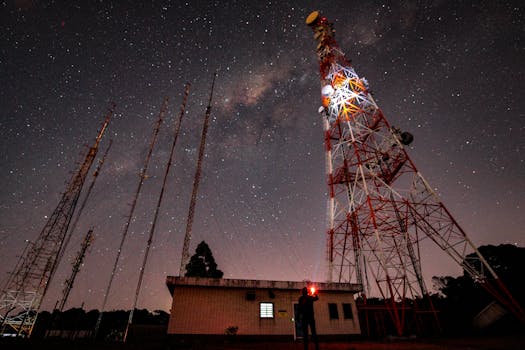
The Sky’s the Limit: How Advanced Satellites are Redefining Communication and Observation
The Sky’s the Limit: How Advanced Satellites are Redefining Communication and Observation. The use of satellites has become an essential part of modern life, with applications in communication, navigation, weather forecasting, and Earth observation. Recent advancements in satellite technology have enabled the development of more sophisticated and capable satellites, which are transforming the way we communicate and observe the world. In this article, we will explore the latest advancements in satellite technology and their impact on communication and observation.
Satellites have been used for communication purposes for several decades, providing a means of transmitting data between different locations on Earth. However, traditional satellites have limitations in terms of bandwidth, latency, and coverage. The latest generation of satellites, such as high-throughput satellites (HTS) and low-Earth orbit (LEO) satellites, offer significant improvements in these areas. HTS satellites, for example, can provide bandwidths of up to 1 Gbps, while LEO satellites can reduce latency to as low as 20 ms.
Advancements in Satellite Technology
Several factors have contributed to the advancement of satellite technology, including improvements in materials, propulsion systems, and electronic components. The use of advanced materials, such as carbon fiber and Kevlar, has enabled the development of lighter and more durable satellites. New propulsion systems, such as ion engines and Hall effect thrusters, have increased the efficiency and maneuverability of satellites. Additionally, advances in electronic components, such as antennas and transceivers, have improved the performance and capability of satellites.
Another significant development in satellite technology is the use of small satellites, also known as CubeSats. These satellites are smaller, lighter, and less expensive than traditional satellites, making them more accessible to a wider range of users. CubeSats have been used for a variety of applications, including Earth observation, communication, and scientific research.
Impact on Communication
The advancements in satellite technology have had a significant impact on communication, enabling faster and more reliable data transmission. The increased bandwidth and reduced latency of HTS and LEO satellites have made them ideal for applications such as broadband internet, video streaming, and voice over internet protocol (VoIP). Satellites are also being used to provide communication services in remote and underserved areas, where traditional communication infrastructure is lacking.
Satellites are also being used to support the development of the Internet of Things (IoT). The IoT refers to the network of physical devices, vehicles, and other items that are embedded with sensors, software, and connectivity, allowing them to collect and exchange data. Satellites can provide the connectivity needed to support the IoT, enabling devices to communicate with each other and with the cloud.
Impact on Observation
The advancements in satellite technology have also had a significant impact on observation, enabling more accurate and detailed images of the Earth. The latest generation of Earth observation satellites, such as the European Space Agency’s (ESA) Sentinel-2 and the NASA’s Landsat 8, can provide high-resolution images of the Earth’s surface, with resolutions of up to 10 cm. These images can be used for a variety of applications, including land use mapping, crop monitoring, and disaster response.
Satellites are also being used to monitor the environment and track climate change. The ESA’s Climate Change Initiative, for example, uses satellites to monitor the Earth’s climate, including sea level rise, ice sheet melting, and ocean acidification. The NASA’s Orbiting Carbon Observatory (OCO) uses satellites to track the levels of carbon dioxide in the atmosphere, providing valuable insights into the causes and effects of climate change.
In conclusion, the advancements in satellite technology have revolutionized the way we communicate and observe the world. The latest generation of satellites, including HTS and LEO satellites, have enabled faster and more reliable data transmission, while small satellites have made space more accessible to a wider range of users. The impact of these advancements can be seen in a variety of applications, including communication, navigation, weather forecasting, and Earth observation. As satellite technology continues to evolve, we can expect to see even more innovative applications and uses for satellites in the future.